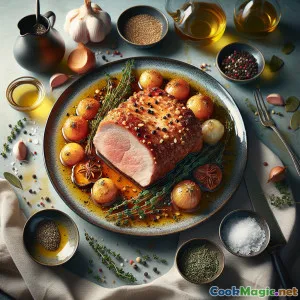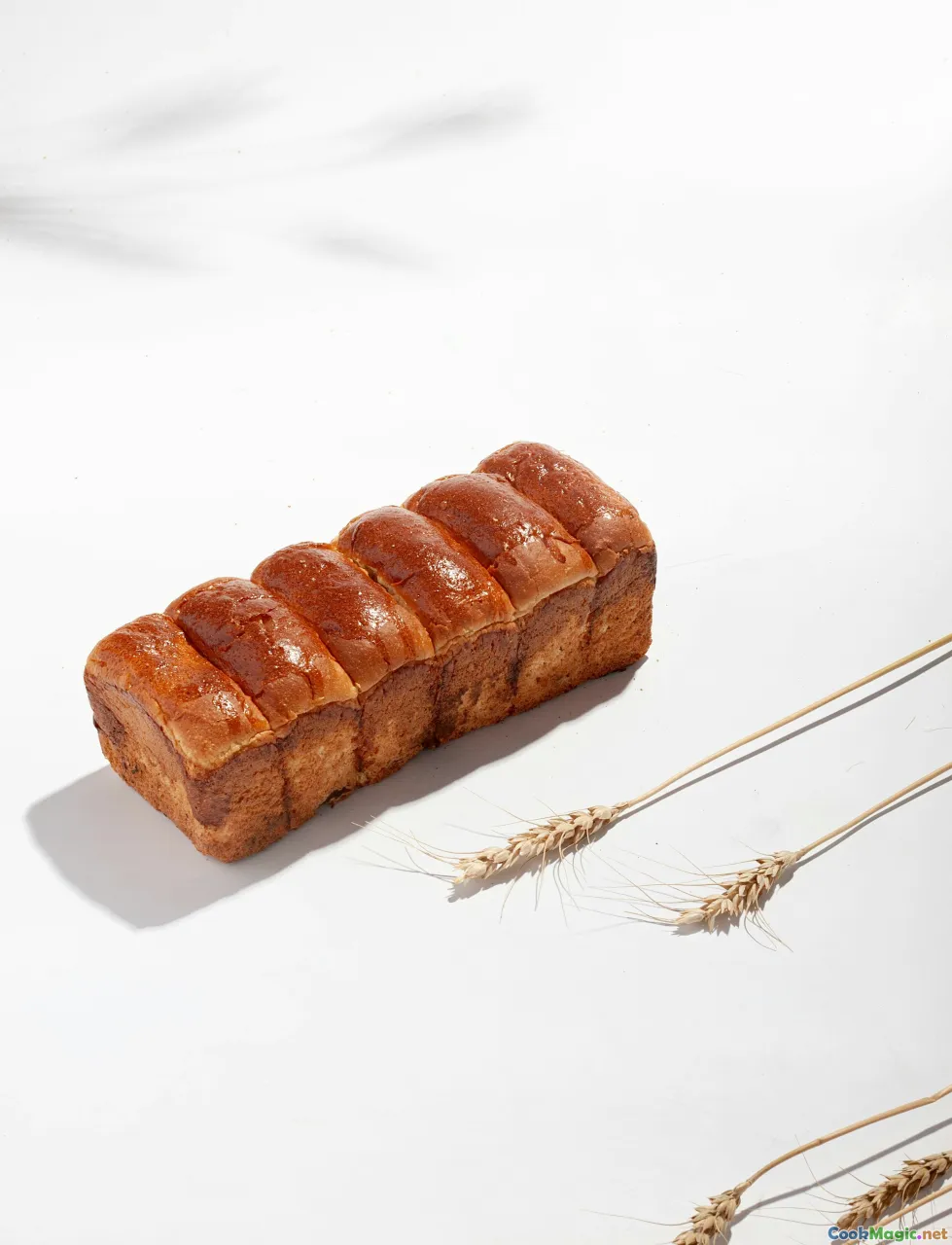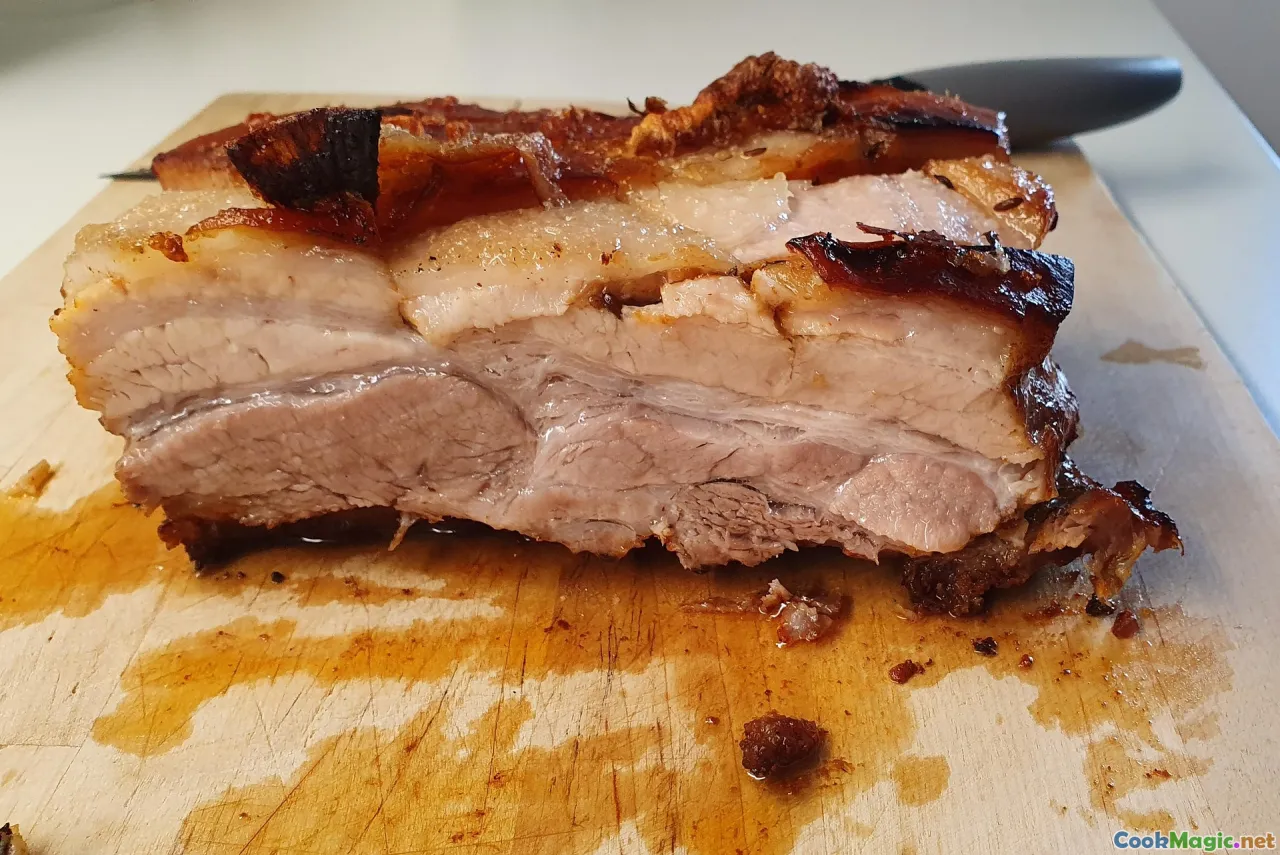
Kelezatan Panggang Daging Babi Madu & Jintan dari Alsace
(Alsatian Honey & Caraway Pork Roast Delight)
(0 Ulasan)0
1,215
Juli 21, 2025
Laporkan Masalah
Bahan
-
1.2 kg Daging paha babi panggang
(Preferably boneless, well-marbled)
-
70 grams Madu bunga liar cair
(Local Alsatian honey if available)
-
2 teaspoons Biji caraway
(Crushed for maximum aroma)
-
2 tablespoons Mustard Dijon
(Smooth variety)
-
4 large Siung bawang putih
(Hancur)
-
3 sprigs Thyme Segar
(atau 1 sdt thyme kering)
-
2 whole Daun salam
-
1 large Bawang
(Diiris tipis)
-
200 ml anggur putih kering
(Riesling or Pinot Blanc preferred)
-
1.5 teaspoons Garam
(Sesuai selera)
-
0.5 teaspoons Lada hitam baru giling
(Sesuai selera)
-
2 tablespoons Minyak nabati
(Untuk memberi warna kecokelatan)
-
20 grams Mentega
(Tanpa garam)
(Preferably boneless, well-marbled)
(Local Alsatian honey if available)
(Crushed for maximum aroma)
(Smooth variety)
(Hancur)
(atau 1 sdt thyme kering)
(Diiris tipis)
(Riesling or Pinot Blanc preferred)
(Sesuai selera)
(Sesuai selera)
(Untuk memberi warna kecokelatan)
(Tanpa garam)
Nutrisi
- Porsi: 6
- Ukuran Porsi: 1 slice (approx. 200g)
- Calories: 440 kcal
- Carbohydrates: 17 g
- Protein: 39 g
- Fat: 22 g
- Fiber: 2 g
- Sugar: 10 g
- Sodium: 850 mg
- Cholesterol: 102 mg
- Calcium: 52 mg
- Iron: 2.1 mg
Instruksi
-
1 - Prepare the Pork & Marinade:
Rub pork loin with salt, pepper, crushed garlic, Dijon mustard, honey, caraway, and thyme. Marinate for at least 20 minutes.
-
2 - Brown the Pork:
Heat vegetable oil and butter in a large, oven-proof skillet or roasting pan. Brown pork on all sides over medium-high heat for rich color and flavor.
-
3 - Infuse Aromatics:
Add sliced onion and bay leaves around the pork. Sauté gently for a few minutes to release flavors.
-
4 - Deglaze and Ready for Roasting:
Pour white wine around the pork. Reserve a tablespoon of the honey-mustard marinade for later glazing, if desired.
-
5 - Roast the Pork:
Roast uncovered in a preheated oven at 180°C (356°F), basting occasionally with pan juices. After 45 minutes, brush pork with reserved honey marinade for the final caramelized glaze.
-
6 - Rest and Serve:
Remove roast from oven when internal temperature reaches 65–70°C (medium). Rest for 10 minutes. Slice and serve with pan juices, onions, and rustic Alsatian bread or spätzle.
Rub pork loin with salt, pepper, crushed garlic, Dijon mustard, honey, caraway, and thyme. Marinate for at least 20 minutes.
Heat vegetable oil and butter in a large, oven-proof skillet or roasting pan. Brown pork on all sides over medium-high heat for rich color and flavor.
Add sliced onion and bay leaves around the pork. Sauté gently for a few minutes to release flavors.
Pour white wine around the pork. Reserve a tablespoon of the honey-mustard marinade for later glazing, if desired.
Roast uncovered in a preheated oven at 180°C (356°F), basting occasionally with pan juices. After 45 minutes, brush pork with reserved honey marinade for the final caramelized glaze.
Remove roast from oven when internal temperature reaches 65–70°C (medium). Rest for 10 minutes. Slice and serve with pan juices, onions, and rustic Alsatian bread or spätzle.
Informasi Lebih Lanjut: Kelezatan Panggang Daging Babi Madu & Jintan dari Alsace
Rôti de Porc au Miel et Carvi d’Alsace
Rôti de Porc au Miel et Carvi d’Alsace, or Alsatian Pork Roast with Honey and Caraway, is a classic dish from France’s culturally rich Alsace region. With roots deeply embedded in both French and Germanic culinary traditions, this roast combines the mellow sweetness of honey, the fragrant complexity of caraway seeds, and the aromatics of garlic, mustard, and fresh herbs. It strikes a harmonious balance between savory and sweet, giving old-world flavors a vibrant modern appeal.
Culinary Heritage & History
Alsace is a region renowned for its hybrid gastronomic identities—due to its history of frequently changing nationality between France and Germany. Both countries’ influences are evident in the place’s hearty, wine-infused, and spice-accented recipes. Caraway, cherished in local bread and sauerkraut, is a uniquely Alsatian touch and plays elegantly with honey and pork—the latter being a revered staple in Alsace thanks to generations of pig farming. The addition of honey isn’t arbitrary; historically, honey has served to mellow spices and preserve meats while adding dimension to cooking juices.
What Makes This Recipe Unique?
What sets this pork roast apart is the interplay of lands and cultures: honey’s floral notes, caraway’s herbal depth, and local white wine’s tart acidity underscore the pork, imparting succulence and subtle perfume to the pan sauce. The mustard in the rub amplifies the juiciness of the meat and deepens the color of the roasting crust. By basting in wine and pan drippings, each slice is extraordinarily moist and enveloped in layers of flavor, eschewing the dryness that can beset traditional roasts.
This recipe is perfect for celebratory family meals, holidays, or as part of a festive Sunday spread. In Alsace, it may be accompanied by choucroute (sauerkraut), pommes de terre sautées (fried potatoes), or the region’s signature spätzle. A chilled Riesling or Gewürztraminer is the beverage of choice, both to enhance the meal and to steep the pork in characteristic local flavor.
Tips, Tricks, & Notes
- Pork Quality: Choose a marbled pork loin for optimal tenderness and flavor. Ethical, local pork always shines brightest in simple roasts.
- Honey Selection: Use high-quality wildflower or forest honey. The complex florals lift the dish, so avoid industrially processed honeys that can taste flat.
- Caraway Matters: Always crush caraway seeds fresh; pre-ground caraway will lack necessary volatility.
- Roasting Pan: Start with a heavy pan to ensure even browning. Alternatively, use cast iron for unbeatable caramelization.
- Oven Thermometer: Pork dries out when overcooked—roast by temperature rather than time for juiciness.
- Resting Time: Allow the pork to rest 10–15 minutes before carving. This principle seals in juices for every forkful.
- Serving Suggestion: Serve with the pan sauce and roasted onions over a bed of warm, soft spätzle or alongside crusty country bread.
Cultural Significance
This dish encapsulates Alsatian conviviality—a warm main course meant to be shared with laughter and local wine. It easily adapts for casual dinners or pris de fête and offers the additional pleasure of filling the kitchen with the scent of baking bread and roasting garlic. Watching the caramelized, golden roast emerge from the oven may even invoke a gentle nostalgia for old-world kitchens and countryside feasts.
Personal Insights
Having prepared this recipe for holiday dinners and cozy winter gatherings, I’ve found the layering of honey and caraway delights adults and children alike. Its aroma is immediately festive yet deeply comforting, drawing guests to the kitchen as they follow the toasty-sweet scents. Its preparation is profoundly satisfying: marinating the pork, browning it until just golden at the edges, basting lovingly—each step feels respectful of the region’s legacy. When paired with tangy sauerkraut, the dish becomes greater than the sum of its parts, merging honeyed warmth with peppery bite and sweet wine glaze.
Closing Thoughts
Rôti de Porc au Miel et Carvi d’Alsace is more than a meal; it’s a sensory journey through the stories, fields, vineyards, and kitchens of northern France. By respecting tradition while allowing for creative touches (a bit more honey, a splash more local wine), home cooks can recreate not only the flavors of Alsace but a cherished piece of its heartfelt conviviality.

























